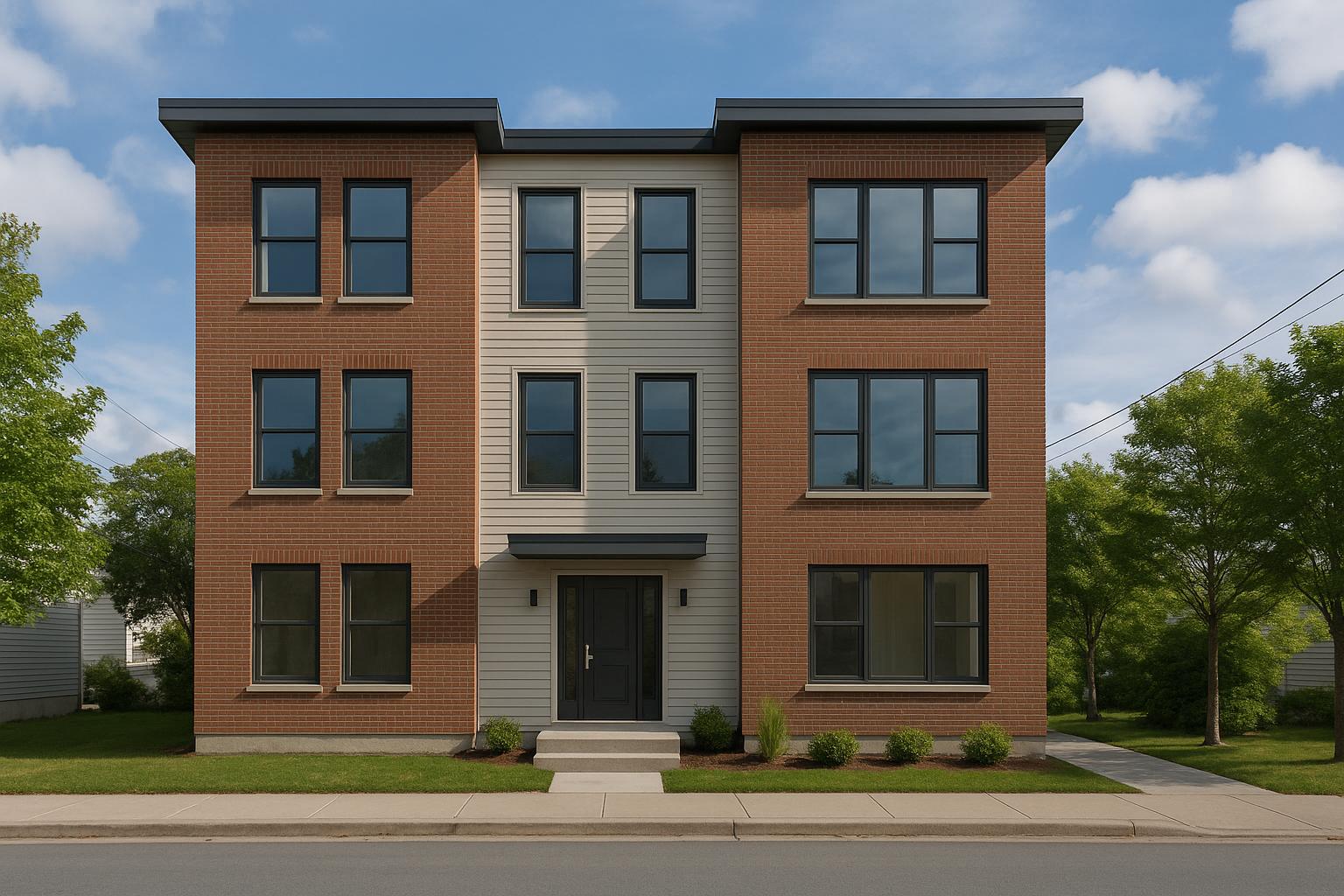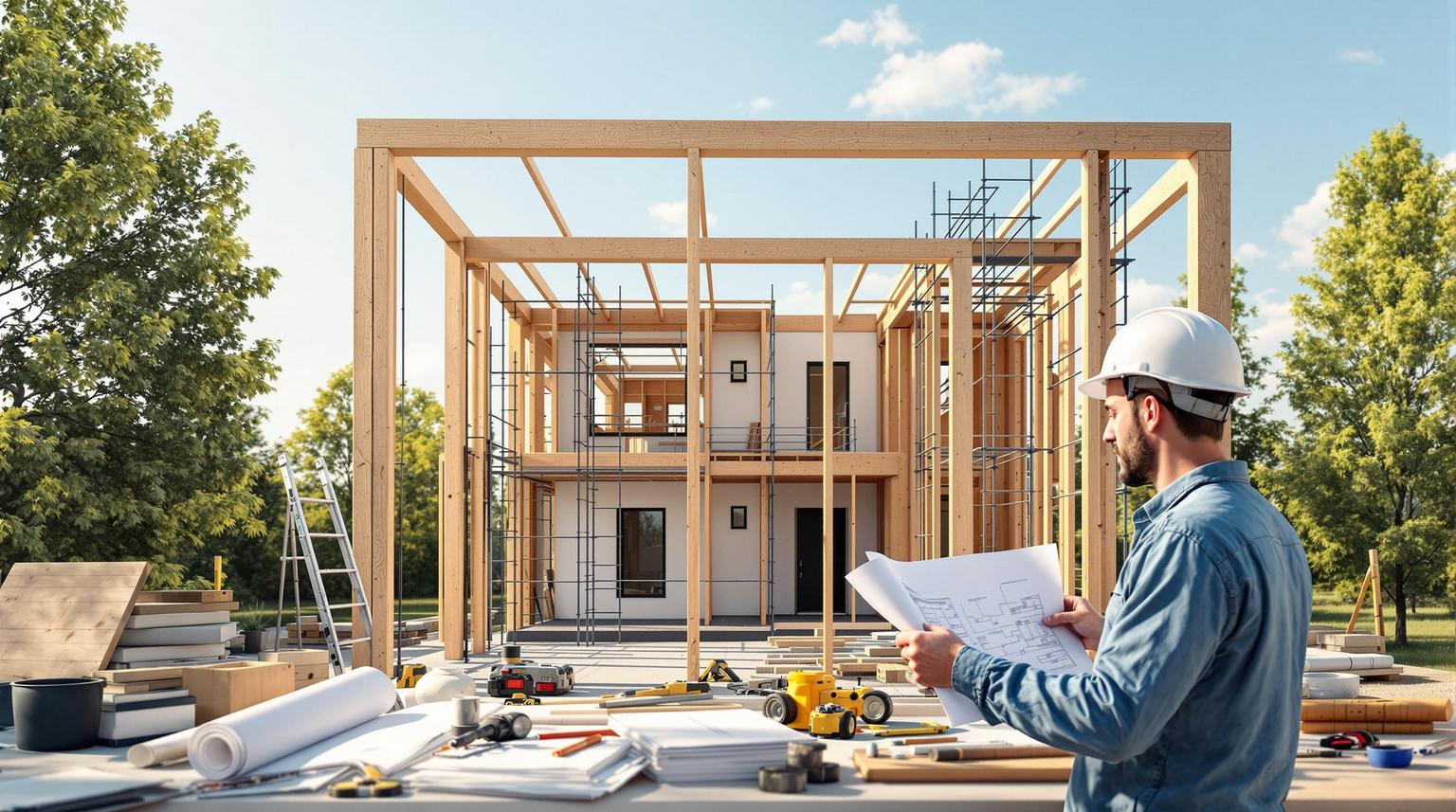Halifax's ER-3 zoning update in June 2024 eliminated mandatory parking requirements for residential developments in urban service areas. This change allows developers to focus on creating housing rather than allocating space for parking, reducing costs and increasing unit potential. Key takeaways:
- What changed? Minimum parking requirements were removed for ER-3 zones, which support single-, two-, and three-unit homes, townhouses, and suites.
- Why it matters: Developers can now build more efficiently, lower costs, and address Halifax's housing shortage.
- Who benefits? Property owners, tenants, and the city, as it aligns with transit-friendly, walkable neighbourhood goals.
This shift is part of Halifax's broader housing strategy to meet the demand for 52,000 new units by 2027. Developers can now prioritize housing needs over parking, making better use of land and contributing to more affordable housing options.
Halifax Wants URGENT CHANGES to Planning Rules for Housing

What Removing Parking Requirements Means
Getting rid of minimum parking requirements reduces construction costs and simplifies the planning process. Instead of focusing on accommodating vehicles, developers can prioritise creating housing that meets community needs. Traditional parking mandates often force property owners to spend significant resources on parking structures, taking funds away from improving the housing itself.
The money saved can be redirected toward features that make properties more appealing to tenants and boost rental income. At the same time, this flexibility allows for more creative and efficient design options.
"It is a major opportunity to boost housing in our community", says Jacqueline Hamilton, Halifax's executive director of planning and development [2].
Making Better Use of Land
Without the constraints of parking requirements, developers can make the most of available land - even on lots with irregular shapes. Urban spaces that were previously challenging to develop can now be reimagined to include more housing units, maximising every square metre.
Supporting Halifax's Housing Goals
This approach aligns perfectly with Halifax's broader housing strategy. The city is facing a significant housing shortfall, with a provincial assessment identifying a gap of nearly 18,000 units and a need for 52,000 additional units by 2027 [2]. By removing parking barriers, developers can contribute to addressing this deficit more effectively while also supporting Halifax's vision of transit-friendly, walkable neighbourhoods.
For property owners, adapting to these changes not only helps meet municipal goals but also provides a competitive edge in Halifax's rental market. Projects that cater to tenant needs and align with urban planning priorities are likely to stand out.
ER-3 Design Rules and Building Requirements
Halifax's updated ER-3 zoning regulations open the door for property owners to create more housing options while preserving the charm of walkable neighbourhoods. These rules establish a balance between increasing density and maintaining community aesthetics. Below, we’ll break down the key requirements for lot coverage, building design, and parking in ER-3 developments.
Lot Coverage and Density Limits
In the ER-3 zone, property owners can now build up to eight units on a single lot. These units can take the form of duplexes, townhomes, small apartment buildings, or condos[2]. Standard lots are permitted up to 40% coverage, but for lots larger than 325 square metres, coverage can increase to 50%[1][3]. Buildings can reach a maximum height of 11 metres (36.1 feet), and townhouse blocks may include up to eight units[3][1]. These flexible coverage rules allow developers to create more housing while keeping project costs manageable.
| Requirement | ER-3 Zone Limits |
|---|---|
| Maximum Lot Coverage | 40%, or 50% for lots over 325 sq. m |
| Maximum Building Height | 11 m (36.1 ft.) |
| Maximum Units per Lot | 8 units |
| Townhouse Block Units | Up to 8 units |
Building Design Standards
The ER-3 design rules aim to enhance the pedestrian experience and promote vibrant streetscapes. For buildings with five or more units, there are specific standards to follow. These include adding street-facing windows, incorporating varied facades, and ensuring entrances are oriented toward the street. Ground floor balconies are not allowed, helping maintain a clean and cohesive look[4]. Together, these design elements contribute to a more inviting and walkable neighbourhood.
Parking Rules (When Provided)
Although parking is not mandatory in ER-3 zones, any parking spaces included in a development must meet strict design standards. Front yard parking is not allowed. Instead, parking areas must be positioned beside or behind buildings and must be screened using landscaping, fencing, or architectural elements[4].
For property owners, working with experienced developers - such as Helio Urban Development, which specializes in multi-unit rental properties - can make it easier to incorporate these parking guidelines into their projects. Additionally, skipping parking construction altogether can help reduce costs, allowing developers to invest in other features to improve their rental units.
sbb-itb-16b8a48
How Property Owners Can Use ER-3 Rules
Halifax's ER-3 zoning now allows property owners to develop multi-unit rentals without the need for mandatory parking. This change opens up opportunities to rethink project design, reduce costs, and create more appealing rental spaces.
Reducing Construction Costs by Skipping Parking
The removal of minimum parking requirements means property owners no longer need to invest in costly parking structures. Instead, funds can be redirected toward features that tenants value, such as upgraded finishes or shared amenities. By cutting out parking-related expenses, owners can focus on creating living spaces that are not only attractive but also generate higher rental income.
Boosting Rental Income with Smarter Designs
Without the constraints of parking spaces, property layouts can be more flexible. This flexibility allows for better use of available land, increasing the number of rentable units. For example, well-designed two-bedroom units can command monthly rents ranging from $1,950 to $2,100. These thoughtful designs not only make the property more appealing to tenants but also help secure steady rental income. To achieve this balance between cost and design, working with skilled teams is essential.
The Value of Experienced Design-Build Teams
Collaborating with an integrated design-build team - one that includes planners, architects, engineers, and construction experts - can significantly reduce delays and unexpected expenses. This streamlined approach ensures the project stays on track and within budget.
Take Helio Urban Development as an example. As Nova Scotia’s only integrated design-build company specializing in 4+ unit rental properties, they offer fixed-price construction at $160,000 per unit with a guaranteed six-month completion timeline. On average, this saves property owners $47,000. They even provide performance guarantees, with penalties of up to $1,000 per day if deadlines are missed.
For those seeking CMHC MLI Select financing, Helio offers an enhanced construction option priced at $200,000 per unit. This tier meets energy efficiency standards, enabling owners to qualify for up to 95% financing with a 50-year amortization. This transparent, all-in-one approach ensures projects comply with ER-3 zoning while helping owners quickly start generating rental income.
Step-by-Step Guide to Building Under ER-3
Building a multi-unit rental property under Halifax's updated ER-3 zoning can be a straightforward process if you follow the right steps. Here's how to go from planning to construction without unnecessary hiccups.
Step 1: Confirm Your Property's Zoning Status
Halifax's ER-3 zoning changes open up exciting possibilities, but the first step is to confirm whether your property qualifies. ER-3 zones are typically located along major transit routes or in areas where townhomes were previously allowed [1]. These zones are part of Halifax's push to create more walkable, transit-friendly communities.
To check if your property falls under an ER-3 zone, consult the Official Zoning Map of Halifax County [5]. Properties in this zone allow for single, two-unit, semi-detached, and three-unit dwellings, as well as townhomes, backyard suites, and secondary suites [1]. If you're unsure about specific requirements, reach out to Halifax County's zoning administrator for guidance [5].
Step 2: Assemble a Design-Build Team
Once you've confirmed your zoning eligibility, the next step is putting together the right team. Opt for an integrated design-build team, which combines design and construction services under one contract. Unlike the traditional approach - where you manage separate contractors, architects, and engineers - this method simplifies coordination and reduces the likelihood of delays or budget issues.
A design-builder is defined as an entity that provides both design and construction services under a single licensed agreement [6]. When selecting a team, look for proper licensing, insurance, and a proven track record with similar ER-3 projects in Halifax [6]. This ensures your project is in capable hands from start to finish.
Step 3: Secure Fixed-Price Construction Contracts
A fixed-price contract is essential for maintaining financial control over your project. This type of agreement locks in costs, helping you avoid unexpected budget overruns.
Request multiple bids from experienced design-build teams familiar with ER-3 projects. Make sure the contract covers everything - from site preparation to final inspections. This comprehensive approach ensures your project meets ER-3 standards while staying on budget. It's also wise to include a contingency fund in your budget to handle any unforeseen challenges. With a fixed-price contract in place, you'll have the financial clarity needed to move forward confidently under Halifax's ER-3 zoning rules.
Conclusion: Making the Most of Halifax's ER-3 Changes
Halifax's decision to eliminate ER-3 parking minimums opens up new opportunities in the face of a 20,000-unit housing shortage and rising rents, which have climbed 11% recently [7].
This change allows developers to align parking provisions with actual market needs, cutting through regulatory hurdles and enabling higher-density projects.
"It is a transformational opportunity to drive housing in our community." – Jacqueline Hamilton, Halifax's executive director of planning and development [2]
Without the burden of mandatory parking spaces, construction budgets can be redirected toward creating more rental units. With HRM's population increasing at a rate of 2% to 4.5% annually [7], the demand for rental housing continues to surpass supply, making now an ideal time to focus on maximizing unit numbers.
To make the most of these changes, consider working with an integrated design-build team. This approach can help streamline your project, avoid costly delays, and keep budgets on track. Parking needs should also be tailored to the property's location - minimal parking may be sufficient in areas close to transit or within walkable neighbourhoods. These strategic decisions can help you take full advantage of ER-3's potential.
FAQs
How does removing minimum parking requirements in Halifax affect affordable housing?
The decision to remove minimum parking requirements in Halifax is anticipated to have a meaningful effect on affordable housing. Without the obligation to include parking spaces in new developments, construction costs are reduced. This gives property developers more flexibility to allocate funds where they’re needed most, like building additional living spaces.
This policy also opens the door for higher-density projects, allowing more rental units to be built on the same parcel of land. Considering Halifax faces challenges with limited land availability, this approach ensures land is used more efficiently. The result? Lower housing costs overall and an increase in affordable rental options in urban areas, making it easier for residents to secure housing within their budget.
What challenges might property owners face when building under Halifax's updated ER-3 zoning rules?
While Halifax's ER-3 zoning rules have eliminated minimum parking requirements, offering more leeway for property owners, this change doesn't come without its hurdles. In high-density areas, managing parking demand can become a balancing act, particularly in neighbourhoods where street parking is already tight or traffic issues are a concern. Plus, with this increased flexibility, careful site planning becomes essential to make the best use of the space while aligning with existing infrastructure and the character of the community.
To navigate these shifts effectively, property owners should prioritize thoughtful planning and collaborate with experienced builders. These professionals can help optimize land use, simplify the approval process, and create developments that are both profitable and well-integrated with their surroundings.
What steps should property owners take to ensure their projects comply with Halifax's ER-3 zoning rules?
To comply with Halifax's ER-3 zoning rules, property owners need to closely examine the specific guidelines tied to their project. These include maximum unit counts, setback requirements, lot coverage limits, and ensuring the design complements the surrounding neighbourhood's character.
It's important to consult Halifax's zoning guidelines and local planning policies to stay on the right track. For extra peace of mind, consider working with a professional who understands Halifax's zoning requirements. This can simplify the process and help you sidestep expensive errors.



